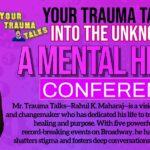By: Michael E. Edwards
Austin Stone’s Missing, Murder Suspected: A True Crime Trilogy takes readers on a deep look into the psychological and emotional complexities surrounding three notorious murder cases. The book, edited posthumously by Edmund (Ed) J.A. Stone is not just a recounting of horrific events but an exploration of the dark side of human relationships and the moral dilemmas that can lead to murder.
Each story in the trilogy reveals the profound impact of love, hate, and guilt on the individuals involved, offering a nuanced understanding of the human psyche and the tragic outcomes that can emerge from even the most intimate of connections.
The Intersection of Love and Violence: “Love and Hate Among the Chickens”
The first story in the trilogy, Love and Hate Among the Chickens, revolves around Norman Thorne, whose tragic love affair ultimately leads to murder. At its heart, this narrative explores the fragile nature of love and the devastating consequences when passion and obsession intertwine. Thorne’s relationship becomes toxic, pushing him to a moral crossroads where he must reconcile feelings of betrayal with the ability to commit an unforgivable act.
Stone’s approach is striking because it focuses not just on the events of the murder but on the internal turmoil of the characters. The story reveals how intense emotions like jealousy, revenge, and guilt can blur the line between right and wrong. Thorne’s actions reflect the darker sides of human relationships—emotions often unspoken and hidden beneath the surface of polite society. In the face of betrayal, love can turn into hate, and from that hate, violence can erupt.
The Horrors of the Mind: “A House of Horror”
The second part of Stone’s trilogy, A House of Horror, delves into a chilling case that explores the minds of both the victims and the perpetrator. While it examines a gruesome crime scene and the investigation, it focuses more on the relationships and psychological dynamics that led to the horror. Stone pushes the boundaries of typical true-crime storytelling by emphasizing the emotional and moral landscapes over the crime itself.
The investigation is not just about finding the killer but understanding how they arrived at a point of no return. How did the perpetrator justify their actions? What moments in their life led to such a heinous act? Stone challenges readers to look beyond the crime’s surface and reflect on the emotional turmoil and moral conflicts that often drive violence.
This story reveals that murder is rarely a black-and-white act of evil. It is often the result of personal history, moral failings, and twisted relationships. The killer here is not a mindless monster but a human who made choices leading to a deadly confrontation. The psychological complexity of the narrative forces readers to confront the unsettling truth that we all have the potential for violence, often hidden beneath ordinary facades.
The Price of Guilt and Redemption: “Four Sacks for a Shroud”
The third section, Four Sacks for a Shroud, shifts Stone’s focus to guilt and redemption. While it follows another murder investigation, the emotional aftermath takes centre stage. The murderer, burdened by guilt, seeks forgiveness and struggles to reconcile past actions with their present self.
Stone’s portrayal of guilt as all-consuming offers a powerful commentary on the complexity of human relationships and moral dilemmas. He shows that while the consequences of murder are irreversible, the emotional journey is more than one-dimensional. Redemption is difficult to achieve, and the pain of guilt can outweigh the crime itself. This section highlights the importance of moral reckoning and the struggle to live with one’s choices.
The Dark Side of Human Relationships
In Missing, Murder Suspected, Austin Stone repeatedly explores the complexities, contradictions, and moral dilemmas inherent in human relationships. Whether depicting a passion-driven murder or the psychological toll of guilt in Four Sacks for a Shroud, Stone’s focus remains on the emotional and psychological factors shaping
human behaviour. His characters are neither heroes nor villains, but individuals caught in a web of conflicting emotions, making life-altering choices.
By avoiding oversimplification, Stone challenges readers to think deeply about morality, love, hate, and guilt. The characters are not inherently evil; they are shaped by their circumstances and emotional struggles. In doing so, Stone forces us to confront the darker aspects of human nature, urging us to question how well we truly understand others’ motivations.
Conclusion
Missing, Murder Suspected: A True Crime Trilogy is a profound exploration of the emotional and psychological depths that drive individuals to commit unspeakable acts. Austin Stone’s unique approach to storytelling brings the dark side of human relationships into sharp focus, offering readers a gripping and thought-provoking read. This book offers valuable insights into the complexities of human emotions, morality, and the motivations behind murder, making it a compelling read for those interested in these topics.
By focusing on the human stories behind the crimes, Missing, Murder Suspected goes beyond the surface-level details of true crime and invites readers to reflect on the broader themes of love, hate, guilt, and redemption. Austin Stone’s literary legacy lives on through this posthumous work, and its emotional depth makes it a valuable contribution to the true crime genre.
Author’s Notes:
In this volume I have taken three cases where the victims were missing for some time before discovery of the crime and have endeavoured to present them in such a way that the reader is not only given an early glimpse into the lives of both victim and accused, but is able, thereafter, virtually to live and breathe with them over the vital period, so that when eventually the crime is revealed, every detail, both factual and psychological, is already known. The brilliance of the expert comes afterwards.
Although at times this may read as fiction, only a minimum of ‘author’s license’ is involved, every fact being authentic, every conversation based on the evidence of witnesses. In this way it is hoped that the reader will be able to fully appreciate the tension and drama, as well as the workings of providence, which often conspire to bring tragedy into the lives of ordinary people.”
Published by Drake M.


















